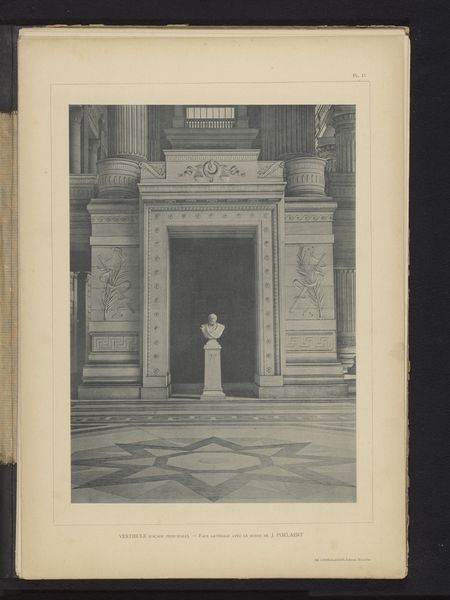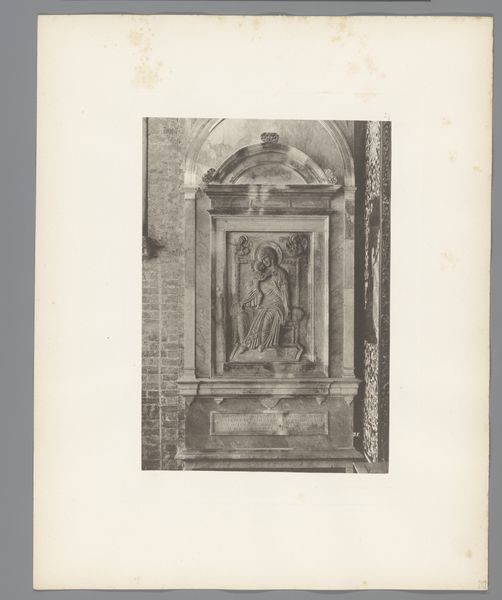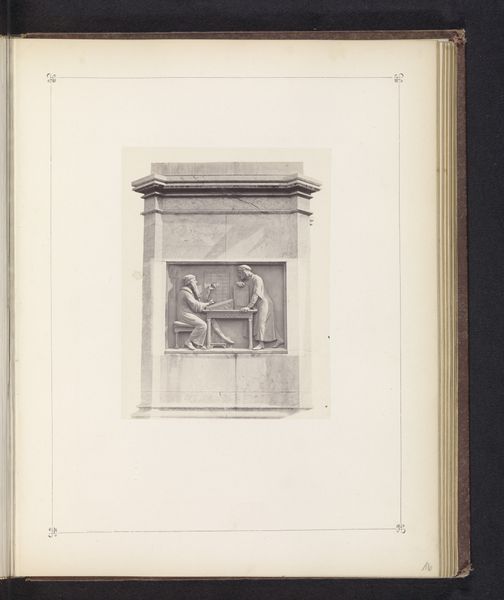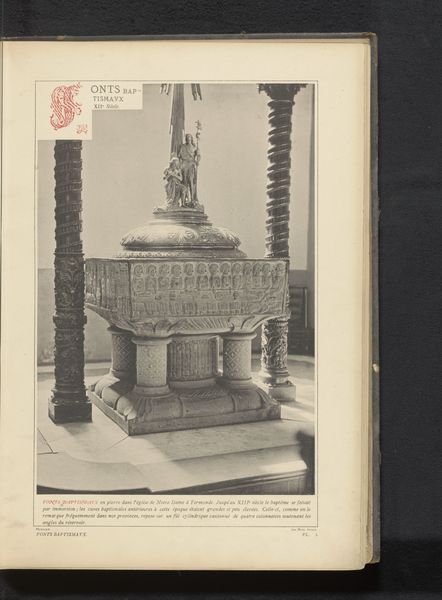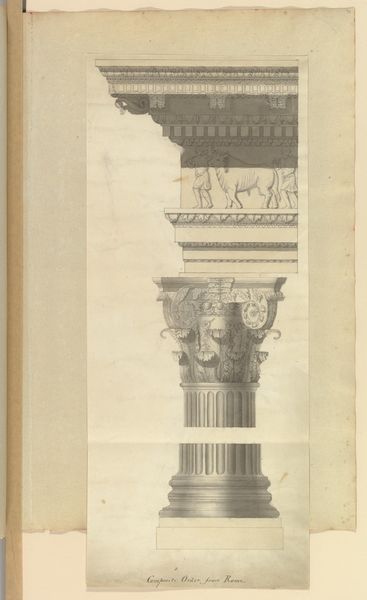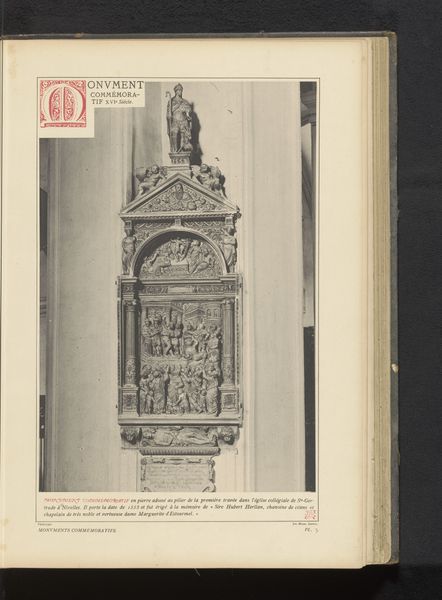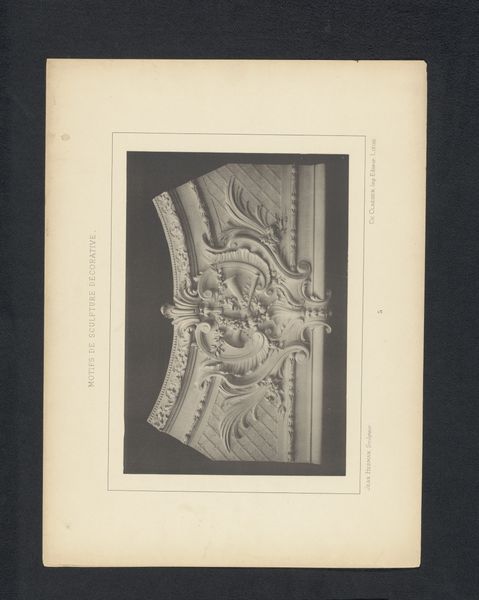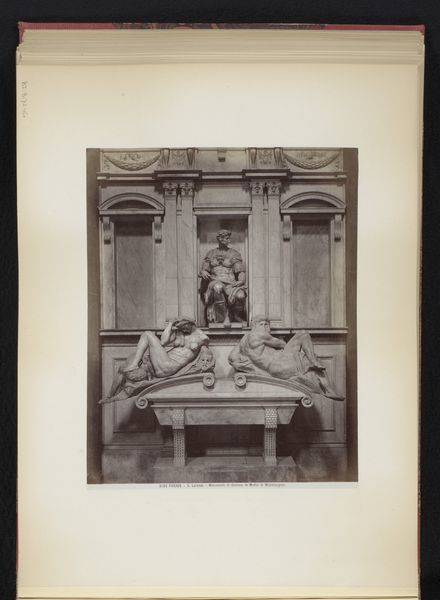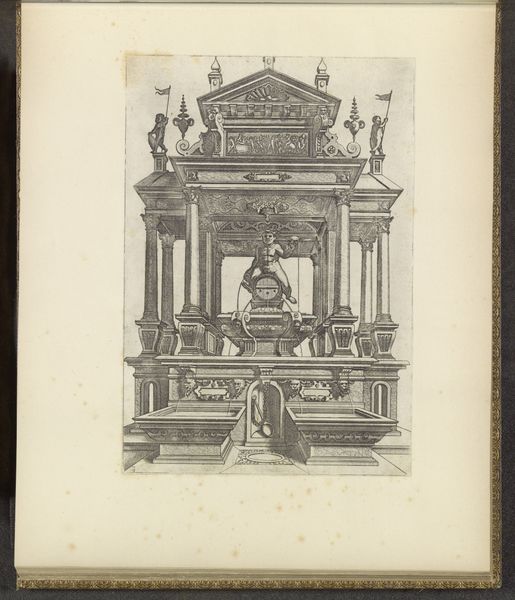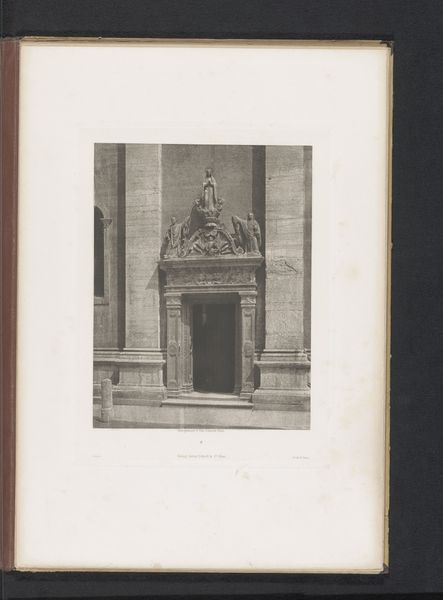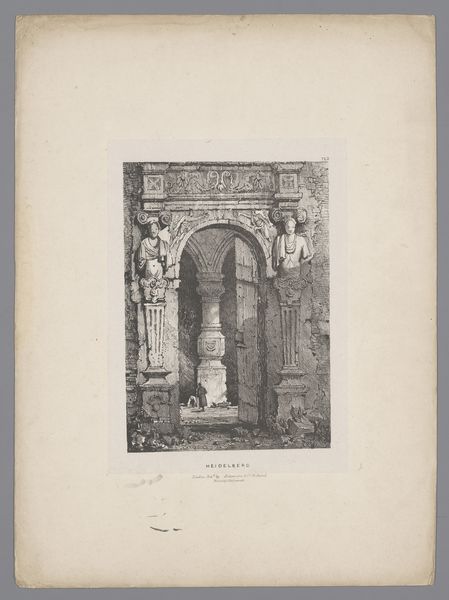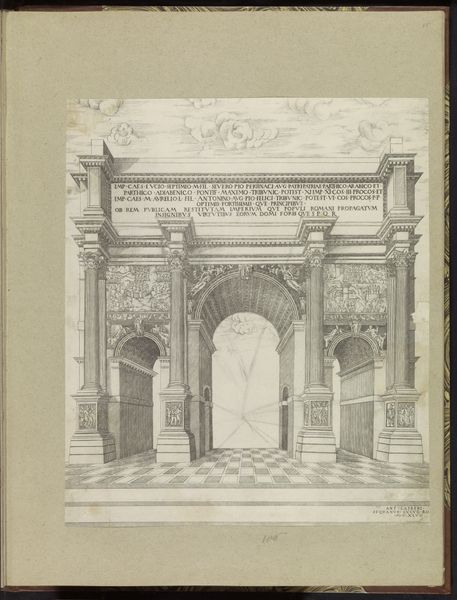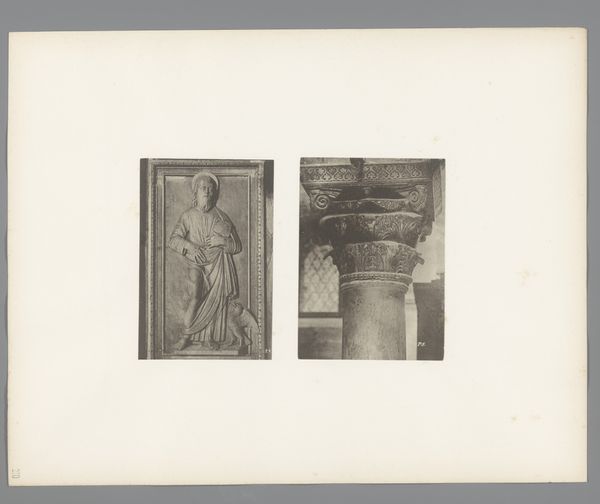
Pilaar met een symbool voor gerechtigheid, aan de voorzijde van het Paleis van Justitie in Brussel, België before 1894
0:00
0:00
Dimensions: height 361 mm, width 203 mm
Copyright: Rijks Museum: Open Domain
Curator: Here we have an image from before 1894 depicting a pillar with a symbol for justice. It stands at the front of the Palace of Justice in Brussels, Belgium. Editor: That is solid! It gives a very solemn, almost severe impression. The detail is amazing - very finely made. The weightiness of the pillar is something else, it gives the impression of something quite heavy-handed. Curator: Yes, the anonymous artist clearly wanted to emphasize the immutable nature of justice through neoclassical form. This is a print, one could see such neoclassical images becoming the emblems of the court system. Academic art became closely intertwined with legal and political authority. Editor: Totally - all those clean lines and geometric details add to the impression. It feels cold, and somehow dehumanizing. Justice reduced to pure rationality. Do you think anyone considered, perhaps, that justice should feel warmer or have heart? Curator: Well, within Neoclassicism, feeling takes a backseat to reason and order, a value which obviously suited those keen to promote rationality in the administration of law and, therefore, society. The artist here really emphasises the idea of justice as an impersonal and enduring principle. I would consider how new technologies such as architectural prints further codified these images. Editor: That's an interesting idea. Thinking about the cultural message behind this. Does the Justice that we can grasp by pure rationality reflect real-life justice? It brings to mind similar architectural patterns, repeated across other halls and columns. Cold halls… and so many echoes. I wonder what it felt like to visit. Curator: This representation highlights the historical aspirations of the justice system. This image underscores how these architectural elements were essential in conveying institutional strength and authority. Editor: Yeah, the image has gotten me thinking now about where we place our trust. We're leaving the digital and moving into something solid. Stone or a drawing of stone… Where is truth to be found? Curator: Well, that gives us a lot to contemplate about justice. Thanks for sharing those wonderful insights.
Comments
No comments
Be the first to comment and join the conversation on the ultimate creative platform.
